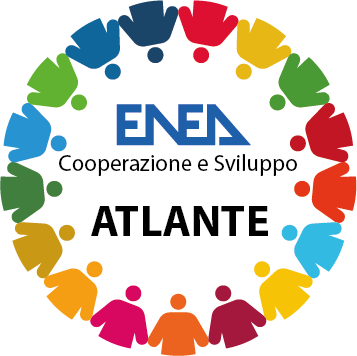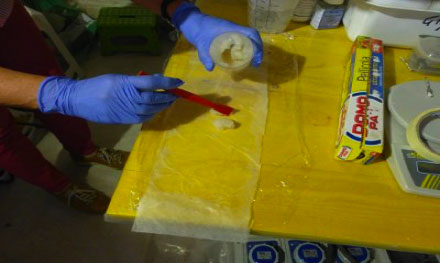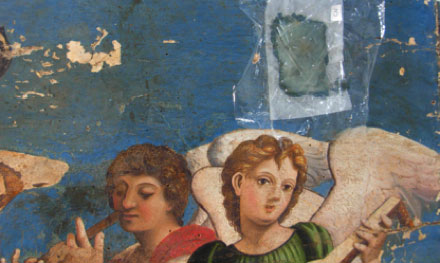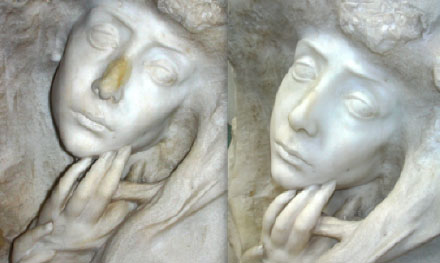Technologies
Biotechnologies for cultural heritage: biorestauration
For achieving the objectives:


Goals: 3. Good health and well-being, 12. Resp. consumption/production
Description
ENEA develops innovative biocleaning and bioconsolidation procedures and delivers advanced services for sustainable restoration interventions using non-pathogenic microbial strains and microbial or plant products.
Benefits and Advantages:
- Use of original (spontaneous and non-pathogenic) microbial strains to develop innovative “tailored” procedures allowing a more sustainable restoration strategy.
- Use of procedures characterized by selectivity, atoxicity, compatibility with constitutive materials and the environment
- Replacement of toxic products commonly used in restoration practices .
ENEA Services:
- Selective cleaning of artistic-historical surfaces using compresses of microorganisms trapped into a supporting matrix (micro-pack) to remove stratified deposits of various origin leaving no residues.
- Production of microbial biocalcites to be used as novel materials for bioconsolidation of stone materials.
- Accurate diagnosis of biodeterioration by microorganisms colonizing workpieces and monuments (biodeteriogens / secondary colonizers).
- Definition of protocols for biodeterioration prevention and monitoring.
- Accurate monitoring of biodeterioration using atoxic microbial or plant products.
ENEA Activities:
- Prize “Smart Communities” SMAU Bologna 2015. EU Patent ENEA-PCT/IT2014/000246.
- Participation in studies or restoration interventions at Casina Farnese on Palatine Hill, the National Gallery of Modern Art, , the Carracci Gallery in Palazzo Farnese, the Vatican Museums and Gardens, the Domus Aurea).
- Project “Recovery of ancient Mexican traditions for the development of sustainable products for cultural heritage restoration” .




